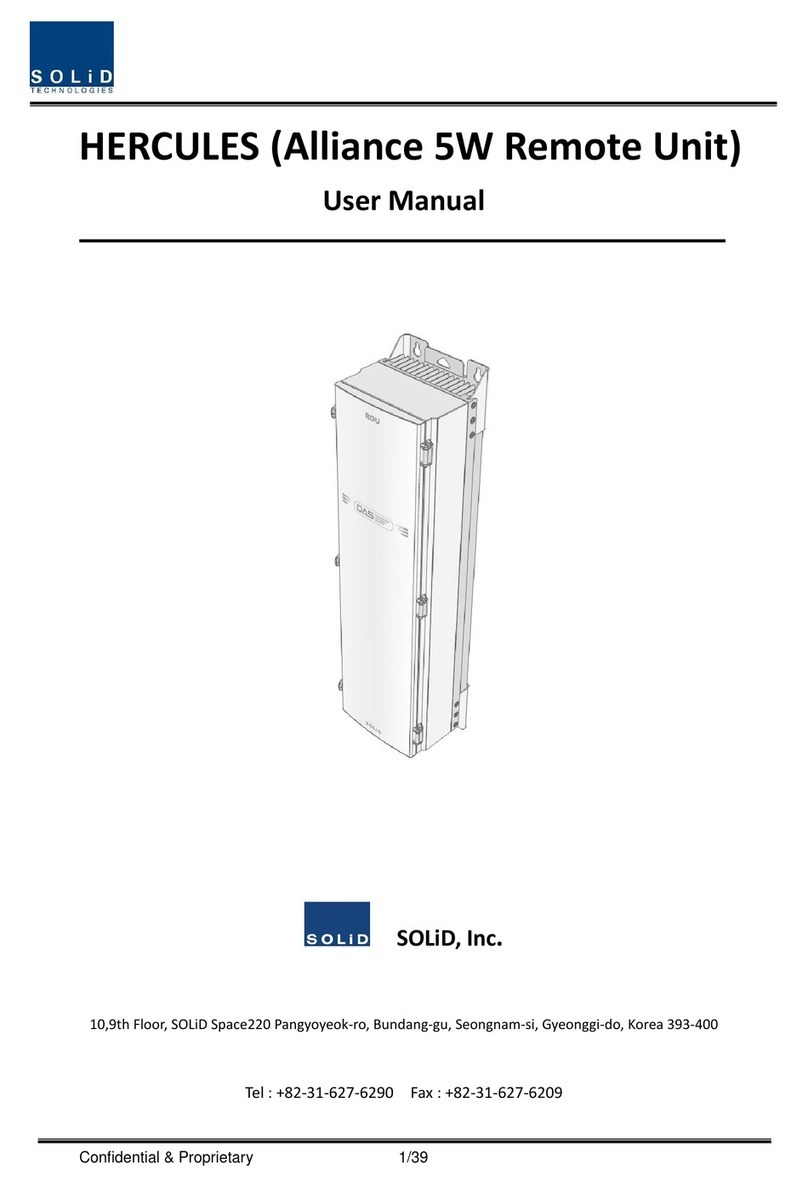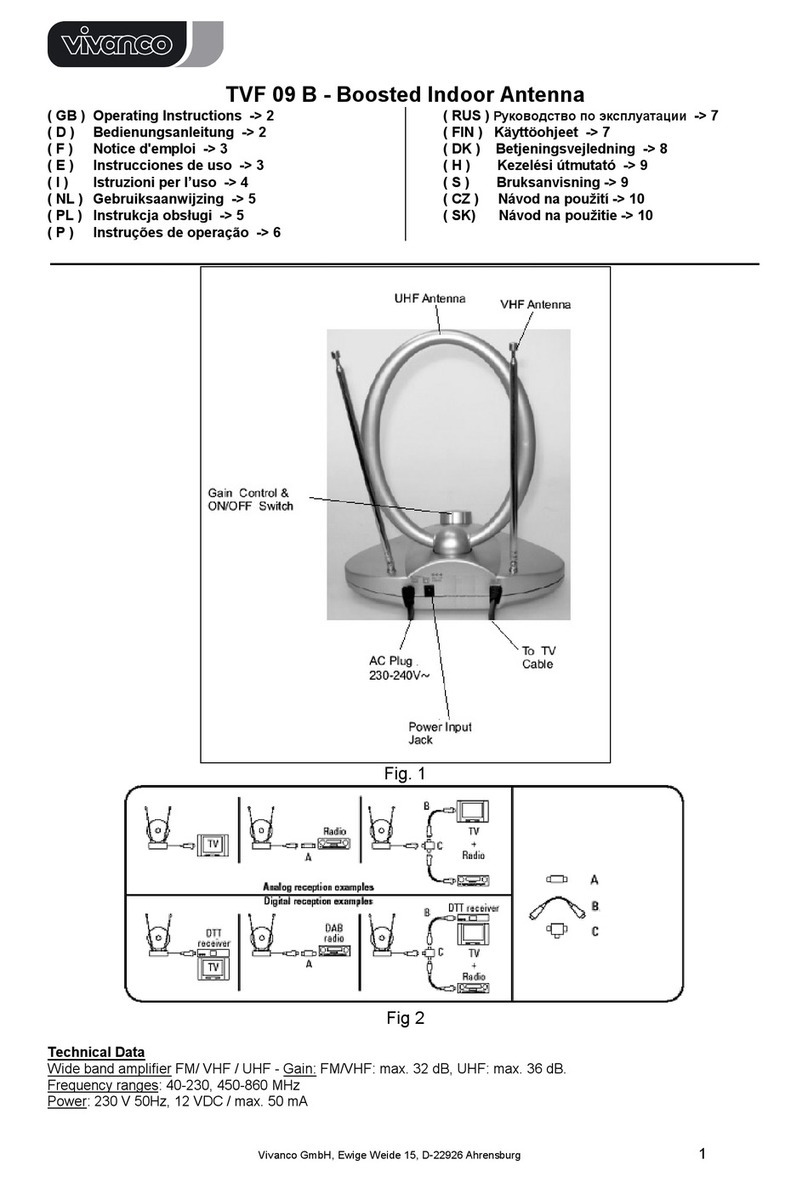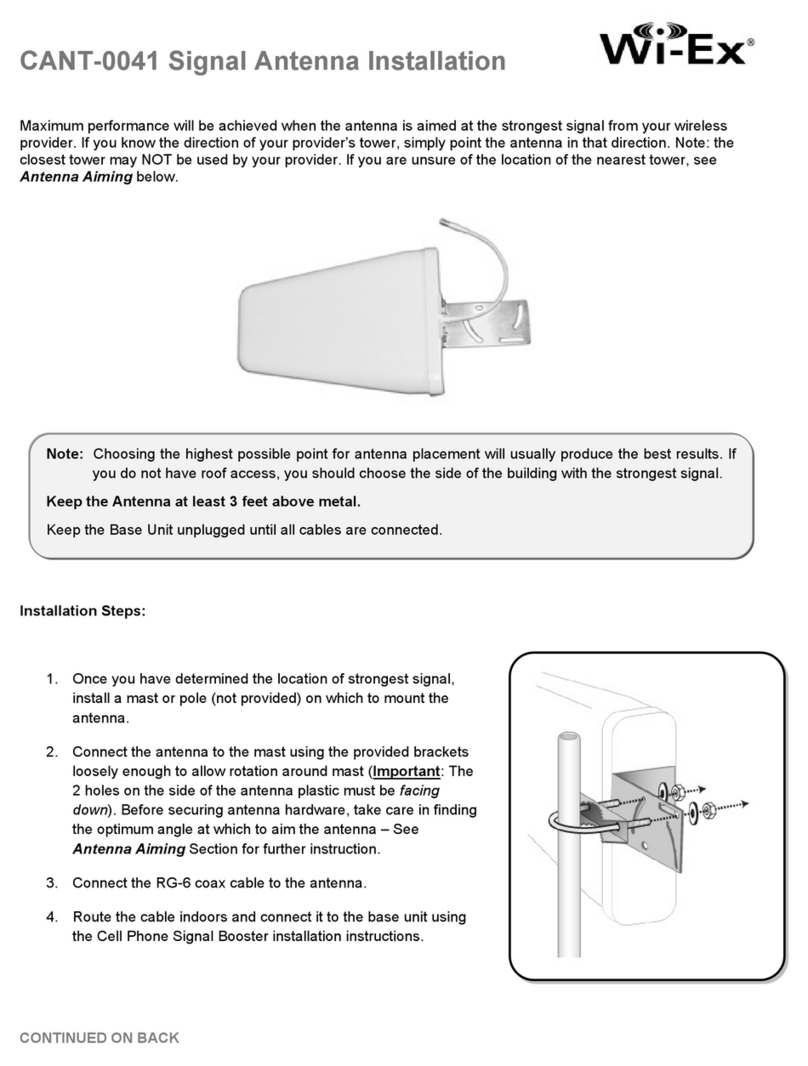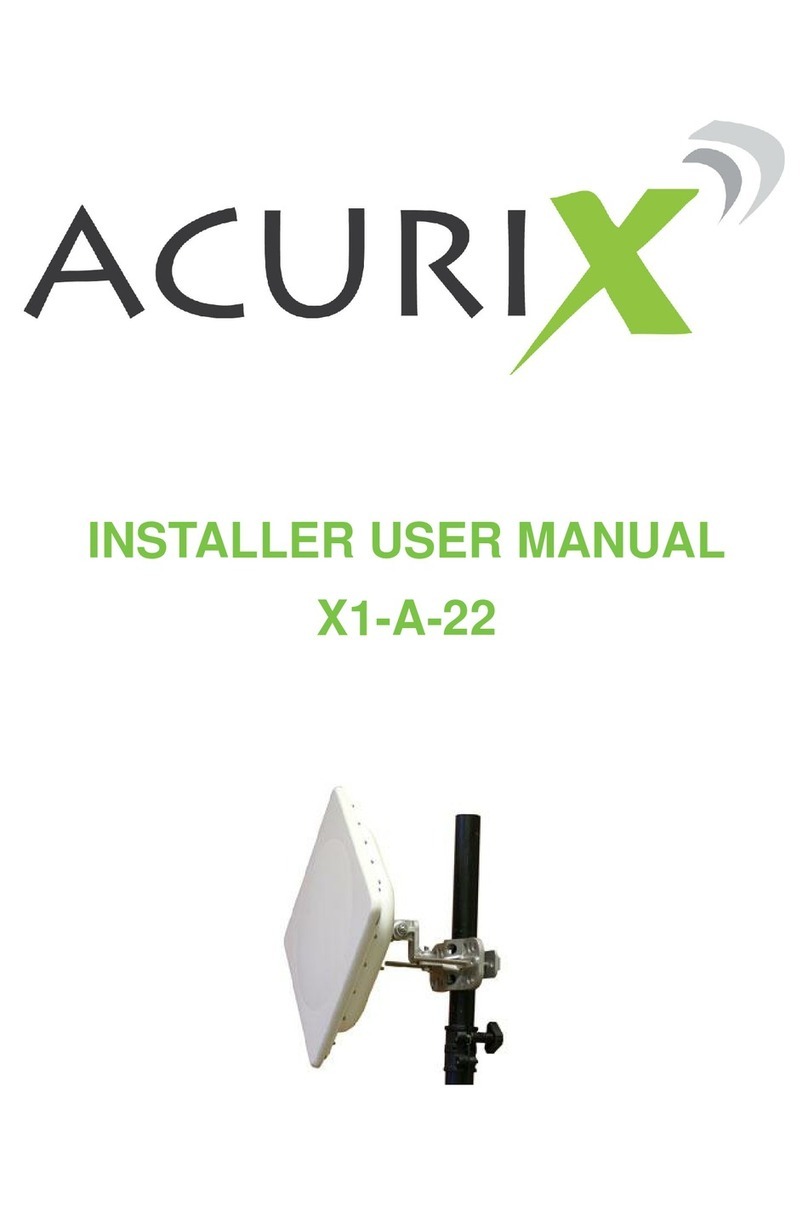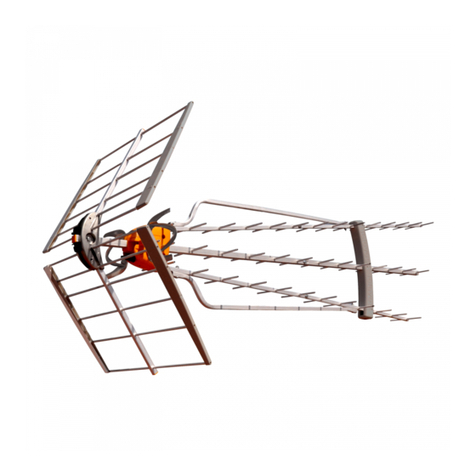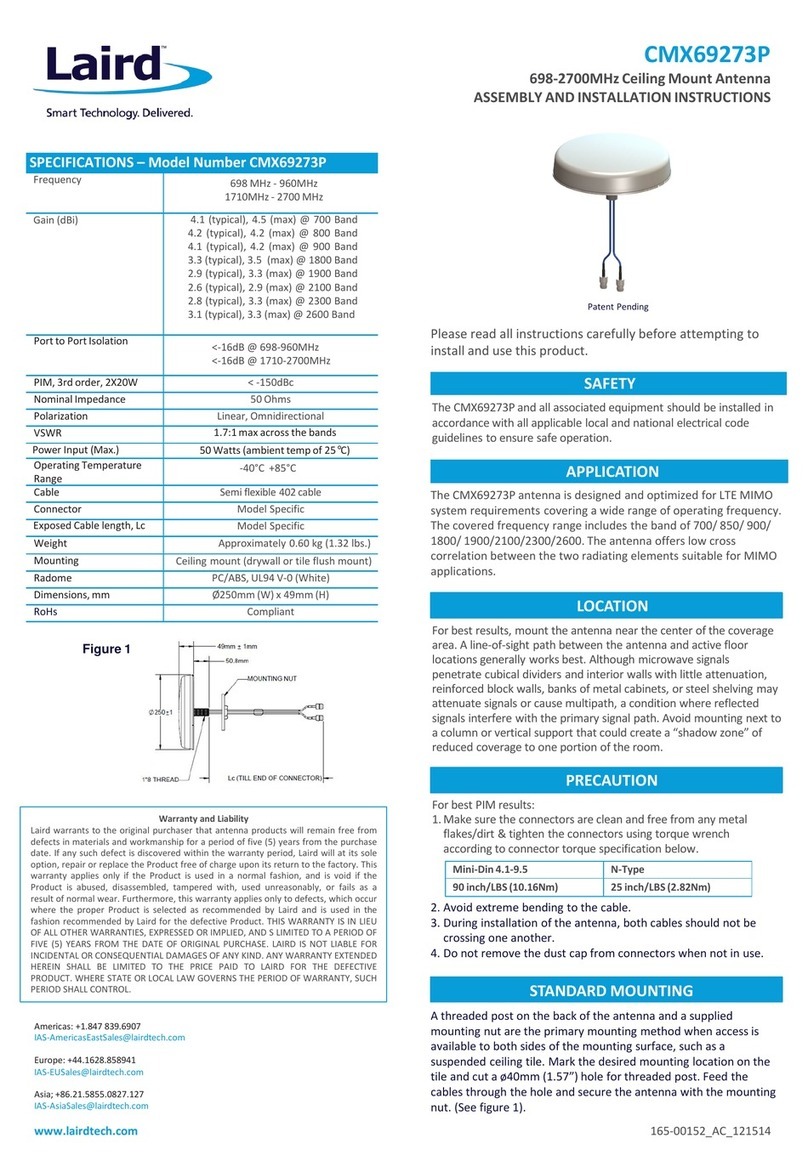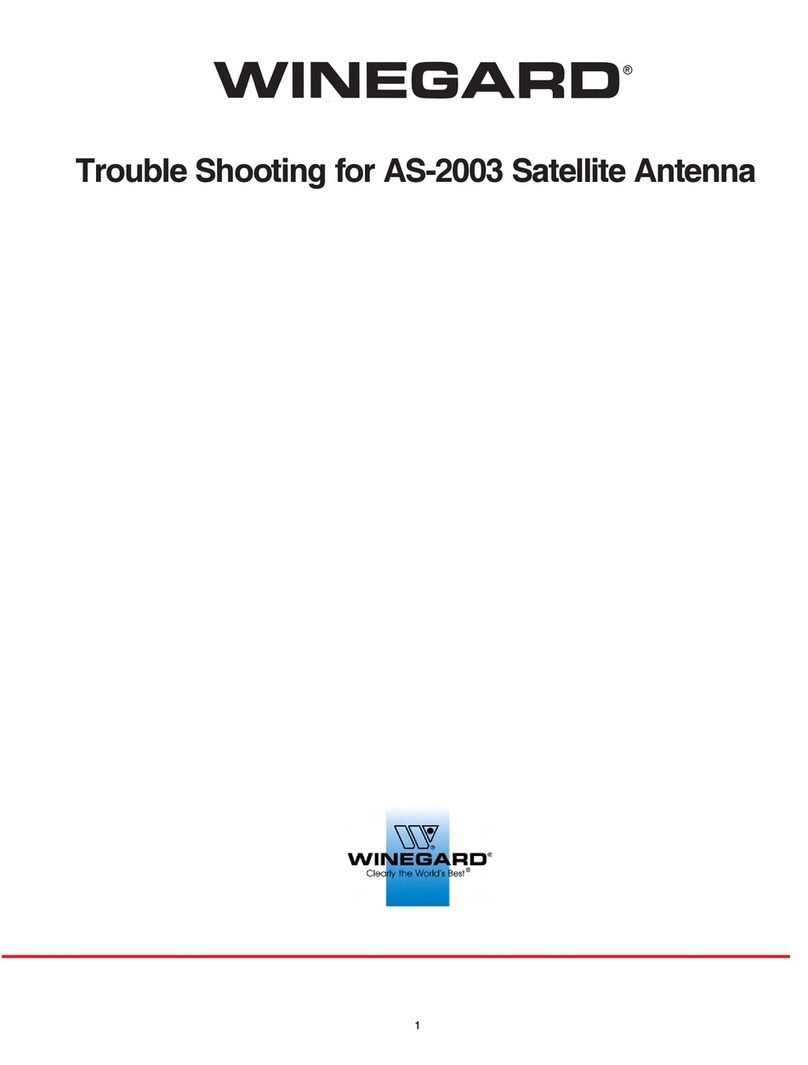Solid Alliance_N2ROU User manual

Confidential & Proprietary 1/17
Alliance_N2ROU
User Manual
SOLiD, Inc.
10,9th Floor, SOLiD Space220 Pangyoyeok-ro, Bundang-gu, Seongnam-si, Gyeonggi-do, Korea 393-400
Tel : +82-31-627-6290 Fax : +82-31-627-6209

Confidential & Proprietary 2/17
REVISION HISTORY
Version
Issue Date
No. of
Pages
Initials
Details of Revision Changes
V 1.0
August. 18, 2018
Original
Technical Support
SOLiD serial numbers must be available to authorize technical support and/or to establish a
return authorization for defective units. The serial numbers are located on the back of the unit,
as well as on the box in which they were delivered. Additional support information may be
obtained by accessing the SOLiD Tehcnology, Inc. website at www.st.co.kr or send email at
This manual is produced by Global Business Division Business Team 1. Printed in Korea.

Confidential & Proprietary 3/17
Contents
Section1 Safety & Certification Notice .................................................................4
Section2 System Overview....................................................................................8
2.1 Purpose.........................................................................................................9
2.2 Alliance_N2ROU...........................................................................................9
2.3 Dimension...................................................................................................10
Section3 System Installation............................................................................... 11
3.1 N2ROU Installation.....................................................................................11
3.1.1 N2ROU Enclosure installation.............................................................11
3.1.2 N2ROU Power Cabling.........................................................................12
3.1.3 Optical Cabling.....................................................................................13
3.1.4 GND Terminal Connection...................................................................13
3.1.5 Coaxial cable and Antenna Connection..............................................14
3.1.6 Insertion of N2RDU ..............................................................................14
3.1.7 N2RDU Specifications Per band..........................................................15

Confidential & Proprietary 4/17
Section1
Safety & Certification Notice

Confidential & Proprietary 5/17
“Only qualified personnel should handle the DAS equipment. Any person involved in
installation or service of the DAS should understand and follow these safety guidelines.”
- Obey all general and regional installation and safety regulations relating to work on high
voltage installations, as well as regulations covering correct use of tools and personal
protective equipment.
- The power supply unit in repeaters contains dangerous voltage level, which can cause electric
shock. Switch the mains off prior to any work in such a repeater. Any local regulations are to
be followed when servicing repeaters.
- To prevent electrical shock, switch the main power supply off prior to working with the DAS
System or Fiber BDA. Never install or use electrical equipment in a wet location or during a
lightning storm.
- When working with units outdoors, make sure to securely fasten the door or cover in an open
position to prevent the door from slamming shut in windy conditions..
- Use this unit only for the purpose specified by the manufacturer. Do not carry out any
modifications or fit any spare parts which are not sold or recommended by the manufacturer.
This could cause fires, electric shock or other injuries.
- Any DAS system or Fiber BDA will generate radio (RF) signals and continuously emit RF
energy. Avoid prolonged exposure to the antennas. SOLiD recommends maintaining a 3-foot
minimum clearance from the antenna while the system is operating.
- Do not operate this unit on or close to flammable materials, as the unit may reach high
temperatures due to power dissipation.
- Do not use any solvents, chemicals, or cleaning solutions containing alcohol, ammonia, or
abrasives on the DAS equipment. Alcohol may be used to clean fiber optic cabling ends and
connectors.
- Do not look into the ends of any optical fiber or directly into the optical transceiver of any digital
unit. Use an optical spectrum analyzer to verify active fibers. Place a protective cap over any
radiating transceiver or optical fiber connector to avoid the potential of radiation exposure.
- Allow sufficient fiber length to permit routing without severe bends.
- For pluggable equipment, make sure to install the socket outlet near the equipment so that it is
easily accessible.
- A readily accessible disconnect device shall be incorporated external to the equipment.

Confidential & Proprietary 6/17
- Certification
FCC: This equipment complies with the applicable sections of Title 47 CFR Parts
15,22,24,27 and 90(Class B)
UL/CUL: This equipment complies with UL and CUL 1950-1 Standard for safety for
information technology equipment,including electrical business equipment
FDA/CDRH: This equipment uses a Class 1 LASER according to FDA/CDRH Rules.This
product conforms to all applicable standards of 21 CFR Chapter 1, Subchaper J, Part
1040
- This power of this system shall be supplied through wiring installed in a normal building.
If powered directly from the mains distribution system, it shall be used additional protection,
such as overvoltage protection device
- Only 50 ohm rated antennas, cables and passive equipment shall be used with this remote.
Any equipment attached to this device not meeting this standard may cause degradation and
unwanted signals in the bi-directional system. All components connected to this device must
operate in the frequency range of this device.
- Only 50 ohm rated antennas, cables and passive components operating from 150 - 3 GHz
shall be used with this device.
- The head end unit must always be connected to the Base Station using a direct cabled
connection. This system has not been approved for use with a wireless connection via
server antenna to the base station.
- Round terminals located on the side of a 1 mm2 (16 AWG) or more wires Using permanently
connected to earth.(green/yellow color)
- The following notice: "The Manufacturer's rated output power of this equipment is for single
carrier operation. For situations when multiple carrier signals are present, the rating would have
to be reduced by 3.5 dB, especially where the output signal is re-radiated and can cause
interference to adjacent band users. This power reduction is to be by means of input power or
gain reduction and not by an attenuator at the output of the device."
- Prior to equipment use the service must be registered with the FCC. This can be done through
the FCC’s website at https://signalboosters.fcc.gov/signal-boosters/.

Confidential & Proprietary 7/17
- Access can only be gained by SERVICE PERSONS or by USERS who have been instructed
about the reasons for the restrictions applied to the location and about any precautions that
shall be taken; and
- Access is through the use of a TOOL or lock and key, or other means of security, and is on
trolled by the authority responsible for the location.
- Notice! Be careful not to touch the Heat-sink part due to high temperature.
- Use of unauthorized antennas, cables, and/or coupling devices not conforming with ERP/EIRP
and/or indoor-only restrictions is prohibited.
- Signal booster warning label message should include
WARNING: This is NOT a CONSUMER device. It is designed for installation by an
installer approved by an ISED licensee. You MUST have an ISED LICENCE or the
express consent of an ISED licensee to operate this device.

Confidential & Proprietary 8/17
Section2
System Overview
2.1 Purpose
2.2 SMDR-NH124

Confidential & Proprietary 9/17
2.1 Purpose
Alliance_N2ROU is a coverage system for in-building services delivering voice and data in high
quality and for seamlessly.
As a distributed antenna system, it provides analog and digital phone systems that are served in
multiple bands through one antenna.
The system covers general public institutions and private facilities.
Shopping malls
Hotels
Campus areas
Airports
Clinics
Subways
Multi-use stadiums, convention centers, etc.
The system helps improve in-building radio environments in poor condition and make better
poor RSSI and Ec/Io. By providing communication services at every corner of buildings, the
system enables users to make a call at any site of buildings.
The system uses both analog (AMPS) and digital (TDMA, CDMA and WCDMA) methods.
The Alliance_N2ROU system supports communication standards and public interface protocols
in worldwide use.
Frequencies: VHF,UHF, 700MHz, 800MHz,850MHz ,1900MHz,2100MHz, etc.
Voice protocols: AMPS,TDMA, CDMA,GSM,IDEN, etc.
Data protocols: EDGE,GPRS,WCDMA,CDMA2000,LTE, etc.
2.2 Alliance_N2ROU
N2ROU receives TX optical signals from ODU or OEU and converts them into RF signals. The
converted RF signals are amplified through High Power Amp in a corresponding N2RDU,
combined with Multiplexer module and then radiated to the antenna port.
When receiving RX signals through the antenna port, this unit filters out-of-band signals in a
corresponding N2RDU and sends the results to Remote Optic Module to make electronic-
optical conversion of them. After converted, the signals are sent to a upper device of ODU or
OEU. N2ROU can be equipped with up to four N2RDUs (Remote Drive Unit)

Confidential & Proprietary 10/17
2.3 Dimension
Figure 3.1 –N2ROU Outer Look
ROU is designed in a cabinet, and provides the following functions and features.
Item
Spec.
Remark
Size(mm)
571 x 450 x260,
Including Bracket
Weight
39 Kg
Full Load
Power consumption
260 W
Operating Temperature
-10 to +50°C
Ambient Temperature

Confidential & Proprietary 11/17
Section3
System Installation
3.1 N2ROU Installation
3.1.1 N2ROU Enclosure installation
N2ROU is designed to be water- and dirt-proof. The unit has the structure of One-Body
enclosure. It satisfies water-proof and quake-proof standards equivalent of NEMA4.
ROU can be mounted into either of on a Wall.
Basically, N2ROU has both of a Wall Mount Bracket.
Depending on the use of the Rack Mount Bracket, the bracket can be removed.
N2ROU component
N2ROU has the following components:
No.
Unit
Description
Remark
Common Part
Enclosure
Including Wall cradle
1EA
RCPU
-
1EA
R_OPTIC
With SC/ACP adaptor
1EA
RPSU
Alternative DC-48V or AC 120V
1EA
Multi-Plexer
5Band or 7Band
1EA
Power Cable
- AC 120 power cable
- DC -48V power cable
1EA

Confidential & Proprietary 12/17
Optional Part
R-OPTIC
Optical Cable Assembly Connector
1EA
Basically, the common part of N2ROU should have an enclosure and it is equipped with RCPU
to inquire and control state of each module, R_OPTIC to make both of electronic-optical and
optical-electronic conversions, RPSU to supply power for N2ROU and a Multi-Plexer to help
share multiple TX/RX signals through one antenna. It should have Power Cable for external
rectifier or to supply required power.
In addition,N2RDU can be inserted and removed to provide service for desired band (Optional).
3.1.2 N2ROU Power Cabling
N2ROU supports both of DC-48V and AC120V of input power. As RPSU for DC-48 and RPSU
for AC120V are separated from each other, you need to select one of them in case of purchase
order.
RPSU for DC -48V and RSPU for AC 120V have the same configuration and capacity while
each of the units uses different input voltage from each other.

Confidential & Proprietary 13/17
3.1.3 Optical Cabling
N2ROU makes optical-electronic conversion of TX signals from upper ODU and OEU and
makes electronic- optical conversion of RX signals. N2ROU has one optical module in it. As
WDM is installed in the R_OPTIC module, two pieces of wavelength (TX:1310nm, RX:1550nm)
can be sent/received with one optical core at the same time. N2ROU has SC/APC of optical
adaptor type.
For optical adaptor, SC/APC type can be used. To prevent the optical access part from being
marred with dirt, it should be covered with a cap during move. When devices are connected
through optical cables, you need to clear them using alcohocol to remove dirt.
Optical cables should be inserted into Optic Port outside of N2ROU.
Through GUI, check if PD value of ROPTIC is in a tolerable range (+5~1dBm).
3.1.4 GND Terminal Connection
N2ROU has one GND terminal port where is on bottom side, like below

Confidential & Proprietary 14/17
-Take off the GND terminal port from enclosure and connect to ground cable, then fix it
the position of enclosure again
-The opposite end of the ground cable should connect to the communication GND of
building
3.1.5 Coaxial cable and Antenna Connection
-The coaxial cables which are connected to antenna distribued network connect to
antenna port of N2ROU. Before connection, check the VSWR value of coaxial cable
whether it is within specification using SITEMASTER .
-At this time, check if the Return loss have above 15dB or VSWR have below 1.5
-The part of antenna connection fasten to port not to be loosed and not to be injected
the dusty and insects
-The antenna connected to N2ROU is only serviced in inbuilding
3.1.6 Insertion of N2RDU
N2ROU has slots to enable up to four N2RDU modules to be inserted into the unit.
You can insert a N2RDU into any slot. It is not possible to provide services with a
N2RDU module alone; you need to connect the module with Multiplexer in any case.

Confidential & Proprietary 15/17
3.1.7 N2RDU Specifications Per band
Unit naming
Bandwidth
(TX/RX)
Output Power
(dBm)
Frequency range
TX(MHz)
RX(MHz)
700LTEF_FN
39 / 17,21
+33
729~768
699~716(B1)
777~798(B2)
800IDEN+850Cell
32 / 32
+33
862~894
817~849
1900PCS
65 / 65
+33
1930~1995
1850~1915
AWS13
70 / 70
+33
2110~2180
1710~1780
2300WCS
10 / 10
+33
2350~2360
2305~2315
2.5TDD
71.2(LB , UB)
37.8(MB)
+32
2496.8~2568(LB)
2574.1~2611.9(MB)
2618.8~2690(UB)
2.5TDD_MIMO

Confidential & Proprietary 16/17
<FCC Warning Statements>
FCC Part 15.105 statement
This equipment has been tested and found to comply with the limits for a Class A digital device,
pursuant to part 15 of the FCC Rules. These limits are designed to provide reasonable
protection against harmful interference when the equipment is operated in a commercial
environment. This equipment generates, uses, and can radiate radio frequency energy and, if
not installed and used in accordance with the instruction manual, may cause harmful
interference to radio communications. Operation of this equipment in a residential area is likely
to cause harmful interference in which case the user will be required to correct the interference
at his own expense.
FCC Part 15.21 statement
Any changes or modifications not expressly approved by the party responsible for compliance
could void the user's authority to operate this equipment.
RF Exposure Statement
The antenna(s) must be installed such that a minimum separation distance of at least 200 cm is
maintained between the radiator (antenna) and all persons at all times. This device must not be
co-located or operating in conjunction with any other antenna or transmitter.
RSS-GEN, Sec. 7.1.2 –(transmitters)
Under Industry Canada regulations, this radio transmitter may only operate using an antenna of
a type and maximum (or lesser) gain approved for the transmitter by Industry Canada. To
reduce potential radio interference to other users, the antenna type and its gain should be so
chosen that the equivalent isotropically radiated power (e.i.r.p.) is not more than that necessary
for successful communication.
Conformément à la réglementation d’Industrie Canada, le présent émetteur radio peut
fonctionneravec une antenne d’un type et d’un gain maximal (ou inférieur) approuvé pour
l’émetteur par Industrie Canada. Dans le but de réduire les risques de brouillage radioélectrique
à l’intention desautres utilisateurs, il faut choisir le type d’antenne et son gain de sorte que la
puissance isotroperayonnée quivalente (p.i.r.e.) ne dépassepas l’intensité nécessaire à
l’établissement d’une communication satisfaisante.

Confidential & Proprietary 17/17
RSS-GEN, Sec. 7.1.2 –(detachable antennas)
This radio transmitter (identify the device by certification number, or model number if Category
II)has been approved by Industry Canada to operate with the antenna types listed below with
the maximum permissible gain and required antenna impedance for each antenna type
indicated. Antenna types not included in this list, having a gain greater than the maximum gain
indicated for that type, are strictly prohibited for use with this device.
Le présent émetteur radio (identifier le dispositif par son numéro de certification ou son numéro
de modèle s’il fait partie du matériel de catégorie I) a été approuvé par Industrie Canada pour
fonctionner avec les types d’antenne énumérés ci-dessous et ayant un gain admissible maximal
et l’impédance requise pour chaque type d’antenne. Les types d’antenne non inclus dans cette
liste,ou dont le gain est supérieur au gain maximal indiqué, sont strictement interdits pour
l’exploitation de l’émetteur.
RF Radiation Exposure
This equipment complies with RF radiation exposure limits set forth for an uncontrolled
environment. This equipment should be installed and operated with a minimum distance of 200
cm between the radiator and your body. This transmitter must not be co-located or operating in
conjunction with any other antenna or transmitter. RF exposure will be addressed at time of
installation and the use of higher gain antennas may require larger separation distances.
RSS-102 RF Exposure
L’antenne (ou les antennes) doit être installée de façon à maintenir à tout instant une distance
minimum de au moins 200 cm entre la source de radiation (l’antenne) et toute personne
physique. Cet appareil ne doit pas être installé ou utilisé en conjonction avec une autre antenne
ou émetteur.
Part 27.5
Antennas must be installed in accordance with FCC 27.50, Part 24, SRSP 510, SRSP 518 and
SRSP 513. With 17dBi gain antennas the height of the antenna above average terrain (HAAT)
must not exceed 601.62m. For different gain antennas refer to the relevant rules.
FCC notice
- Use of unauthorized antennas, cables, and/or coupling devices not conforming with ERP/EIRP
and/or indoor‐only restrictions is prohibited.
- Home/ personal use are prohibited.
Table of contents
Other Solid Antenna manuals
Popular Antenna manuals by other brands
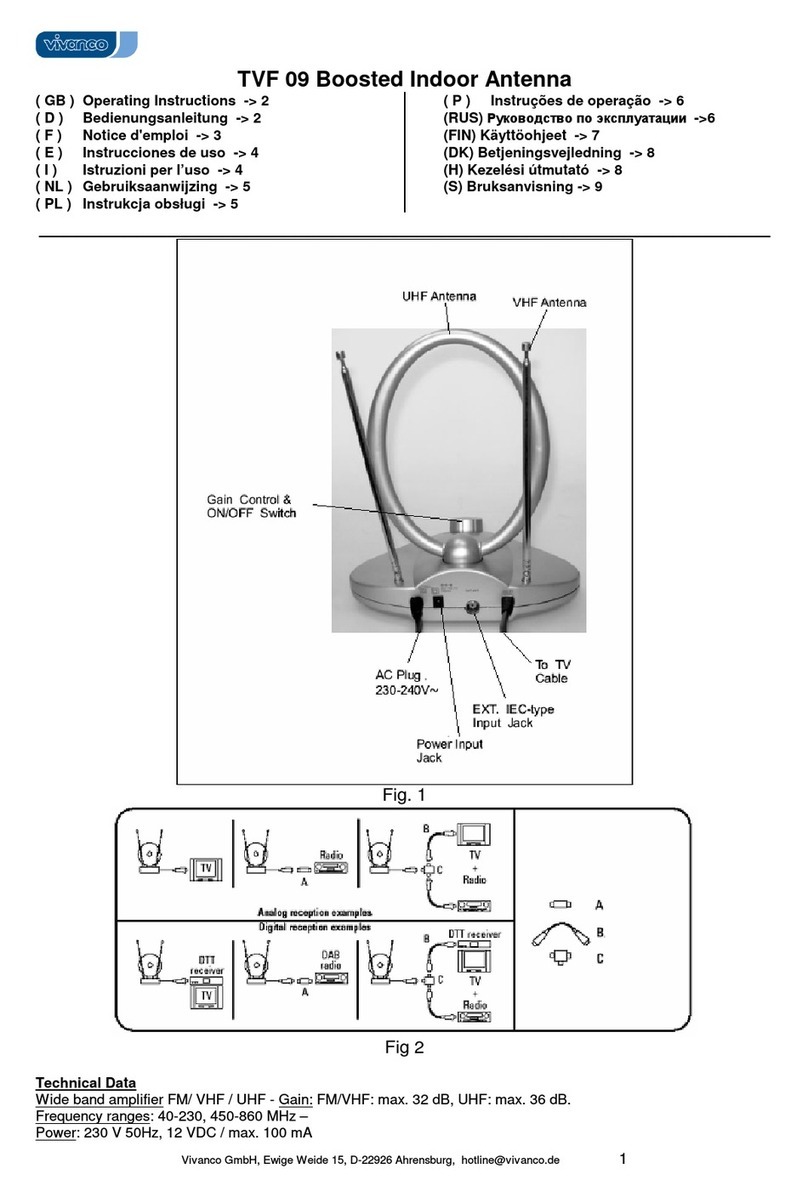
Vivanco
Vivanco BOOSTED DIGITAL UHFVHF INDOOR ANTENNA operating instructions
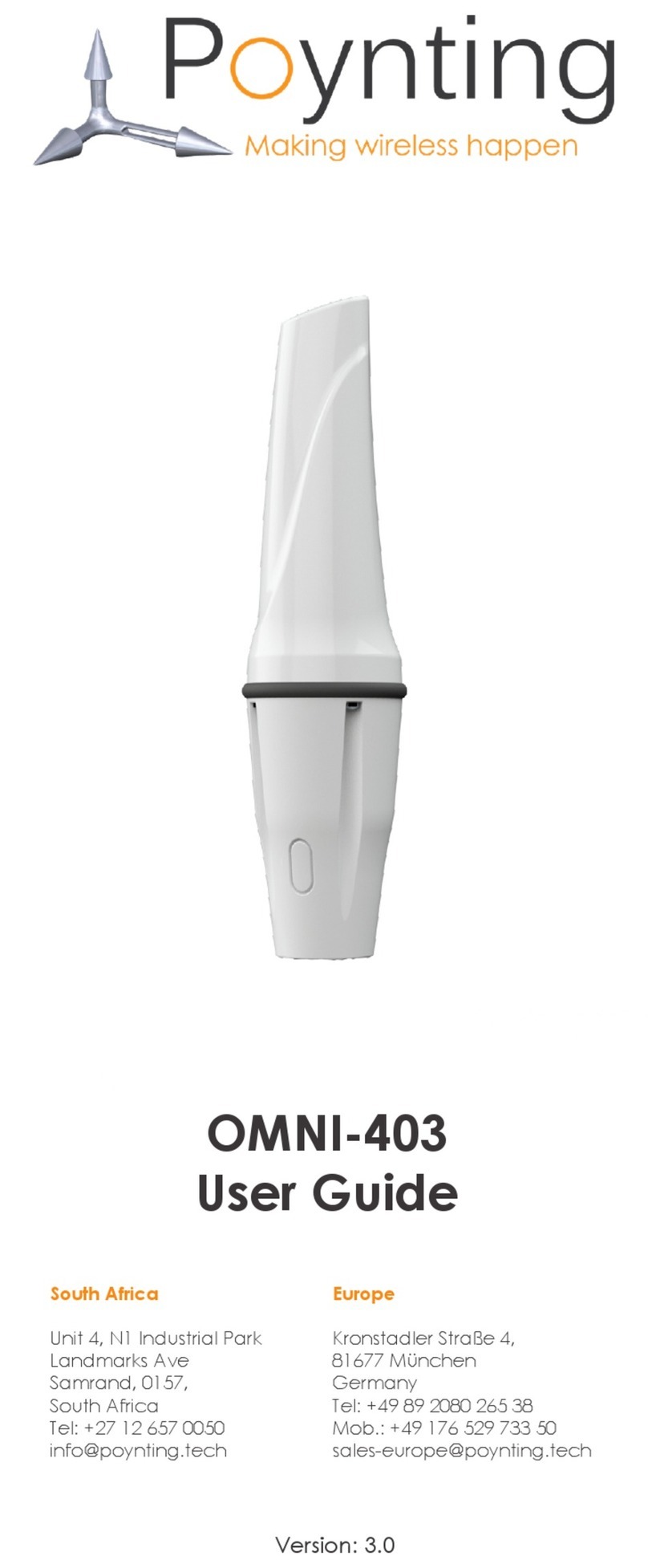
Poynting
Poynting OMNI-403 user guide
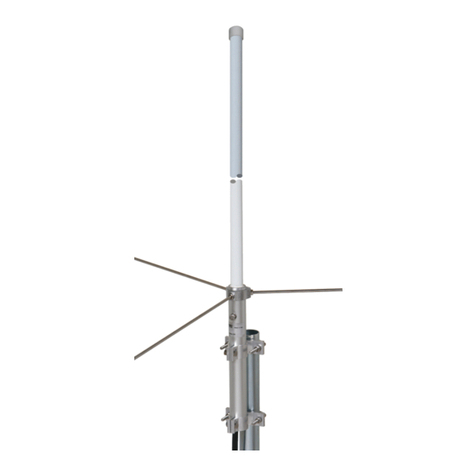
Sirio Antenne
Sirio Antenne GPF 22 N installation manual
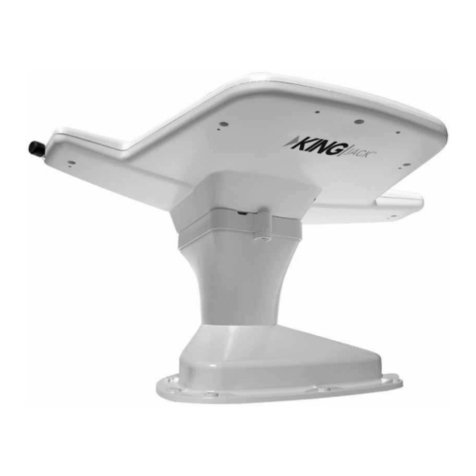
KING
KING JACK OA8201 troubleshooting guide
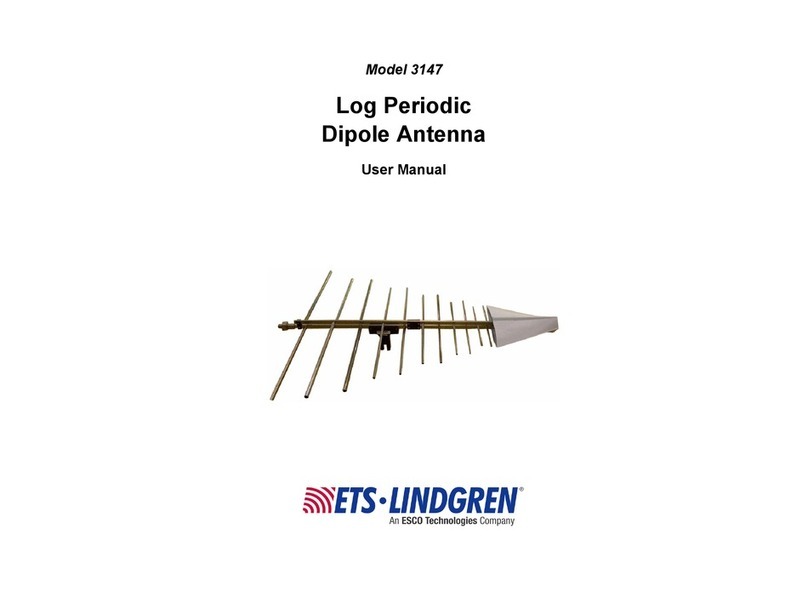
ESCO Technologies
ESCO Technologies ETS-Lindgren 3147 user manual

DX Engineering
DX Engineering 4-BTV Assembly and installation instructions
